
The purpose of this regular newsletter commissioned by Irish Steel is to keep members informed about the key trends in the global and domestic economy that impact on the activities of Ireland’s metal fabrication and manufacturing community.


Irish Steel was founded in 2014 after the introduction of the Construction and Product Regulations (CPR). The founders of Irish Steel recognised at that stage that there was a major information deficit for steel fabricators around the new mandatory standards.
Irish Steel sees itself as the knowledge, expertise and connection hub for Ireland’s metal fabrication and manufacturing community.
Our Vision: ‘By making outstanding programmes and services available, our membership will participate and collectively benefit from an increase in excellence within the Irish metal fabrication and manufacturing industry’s community.’
Our Mission: ‘We are dedicated to helping our members build more resilient and successful businesses by bringing industry stakeholders together to share knowledge and use their collective experiences for good during the time that we set the seeds for collaborative mindsets to become the daily norm amongst all members of our industry and community.’
The purpose of this regular newsletter commissioned by Irish Steel is to keep members informed about the key trends in the global and domestic economy that impact on the activities of Ireland’s metal fabrication and manufacturing community.
In understanding what is happening in the Irish steel market, some influential factors need to be considered.
Firstly, it is important to understand the key global trends in steel markets and the overall structure of the market.
Secondly it is important to understand key trends in the global economy, particularly concerning growth dynamics, inflation, interest rates, and investment activity.
Thirdly it is important to understand key trends in the Irish economy and the performance of sectors that generate activity for the membership of Irish Steel. Finally, it is important to understand the key issues influencing the business environment in which members of Irish steel operate.
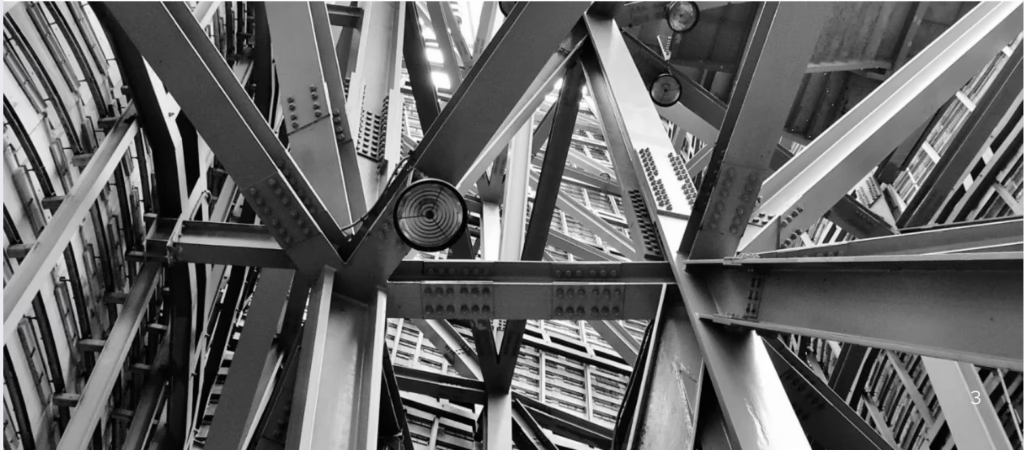
Key issues
The general outlook for demand for the goods and services that the Irish steel sector provides and produces looks positive. The economy is doing reasonably well; interest rates are coming down and are projected to fall by at least 1.5 per cent over the next 12 months; and the demand for product and services from key sectors such as construction, public infrastructure, alternative energy and agriculture should hold up reasonably well over the coming year.
·The operating environment for the sector is very challenging. Labour shortages are acute; the cost of labour is rising strongly; recent labour market changes are adding to business costs; and elevated non-labour costs are creating significant problems for the steel sector. The following issues are highlighted in this report.
Many of these issues were highlighted in the last report, but all remain relevant.
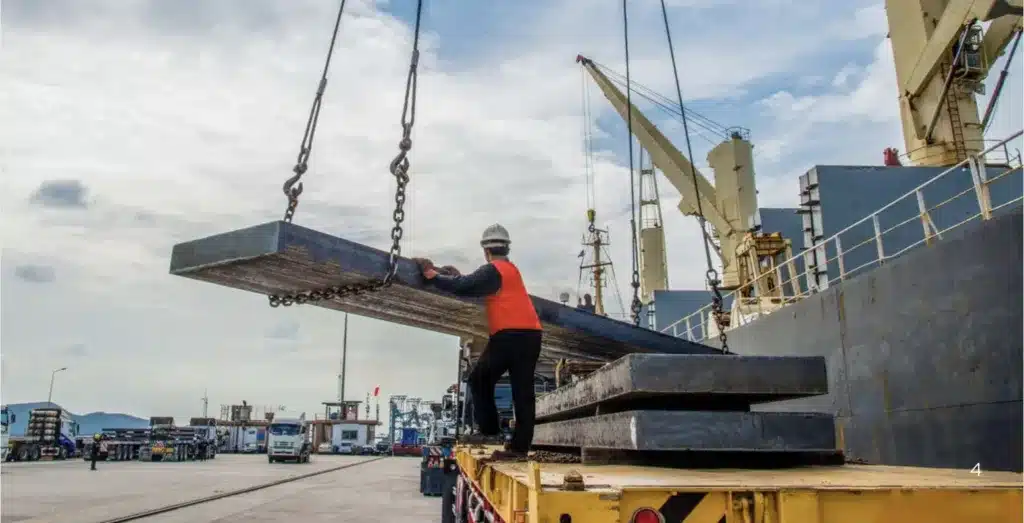
The steel industry plays a key role in economic life everywhere. It is the backbone of construction, manufacturing, infrastructure, transportation, and the energy sector. It is a critical component of the building of the global green energy infrastructure.
GLOBAL DEMAND
The purpose of this regular newsletter commissioned by Irish Steel is to keep members informed about the key trends in the global and domestic economy that impact on the activities of Ireland’s metal fabrication and manufacturing community. In understanding what is happening in the Irish steel market, some influential factors need to be considered. Firstly, it is important to understand the key global trends in steel markets and the overall structure of the market.
Secondly it is important to understand key trends in the global economy, particularly concerning growth dynamics, inflation, interest rates, and investment activity. Thirdly it is important to understand key trends in the Irish economy and the performance of sectors that generate activity for the membership of Irish Steel. Finally, it is important to understand the key issues influencing the business environment in which members of Irish steel operate.
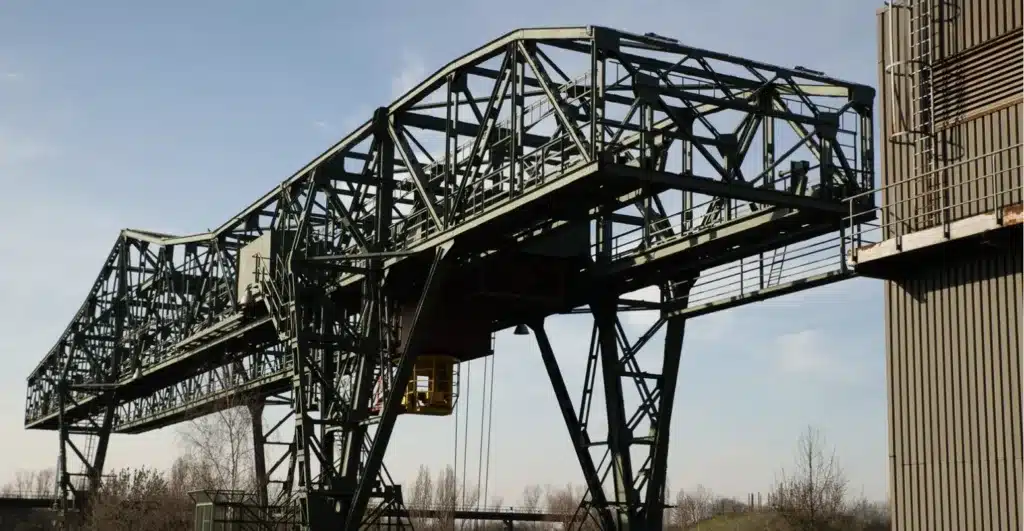
PRICE TRENDS
Global steel prices spiked dramatically in the second half of 2020 as global supply chain problems impacted on supply.
Between July 2020 and November 2021, the producer price of iron and steel increased by 126 per cent. Between November 2021 and August 2024 prices declined by 34.4 per cent. Prices have increased modestly since August, and in October 2024 were 53 per cent higher than in 2020. (Figure 1).
In August 2024 steel rebar futures prices fell to the lowest level since 2016.This downward trend in futures prices was primarily driven by the sharp slowdown in the Chinese economy, and particularly the problems in the property and construction sector. However, since the middle of August, futures prices have increased by over 20 per cent.
This recent spike is primarily a reaction to the recent aggressive efforts by the Chinese authorities to stimulate the economy. There are expectations that China’s Economic Work Conference will announce further support measures for the economy, and particularly for the heavily indebted and struggling property developers.
In addition, efforts will be made to offset the possible impact of Trump tariffs in 2025. Such tariffs could undermine exports from Chinese steel mills who have increasingly focused on export sales in response to the slowdown in the domestic economy. Chinese property developers are amongst the largest users of steel rebar in the world.
As one of the world’s largest consumers of steel, the performance of the Chinese economy and possible tariffs from President Trump will have a key impact on the global demand and supply of steel in 2025.
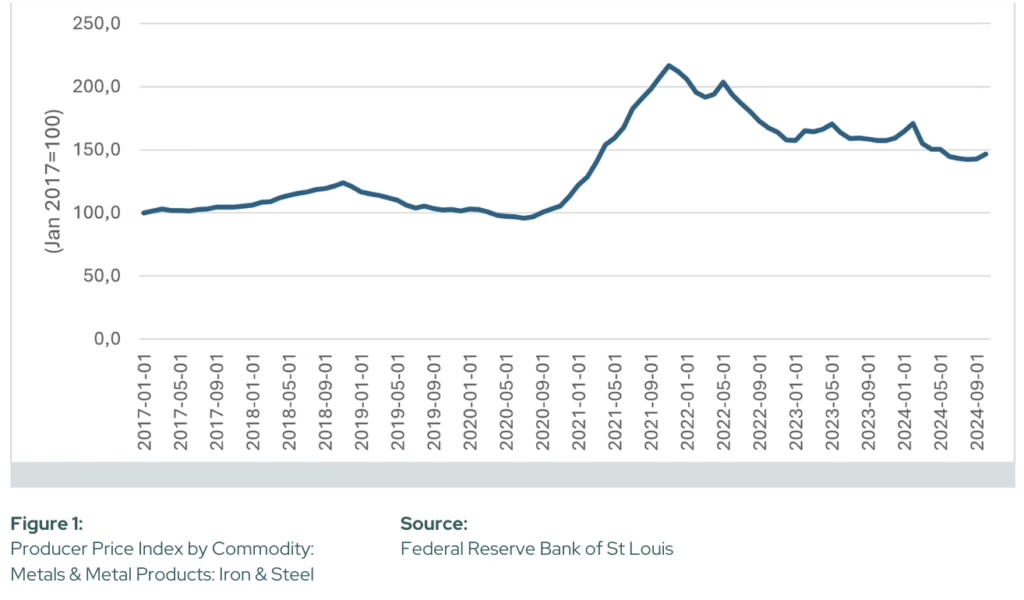
In any consideration of the domestic environment for the Irish steel and fabrication sector, the global economic and political environment in which the Irish economy operates is of crucial importance.
GLOBAL DEMAND
The global economic backdrop has been mixed over the past quarter. Growth everywhere was quite subdued; inflation continued to moderate; and many central banks continued to cut interest rates.
On currency markets, the euro had a bad month in November, losing around 3 per cent of its value against the dollar, Between the beginning of October and end-November the euro depreciated by almost 5.5 per cent against the US currency from 1.1170 to 1.0567.
Political instability in France and Germany; the expectation of more aggressive ECB rate cuts against a weak economic backdrop; and fears about the impact of ‘Trump Tariffs’ on the already weak Euro Zone economy have combined to weaken the euro. It would not come as a major shock if the euro went to parity against the dollar.
Table 1 shows the quarterly growth profile of a few countries over the first 9 months of 2024. The US is doing well, but elsewhere growth in pretty underwhelming, and Germany is a particular cause for concern.
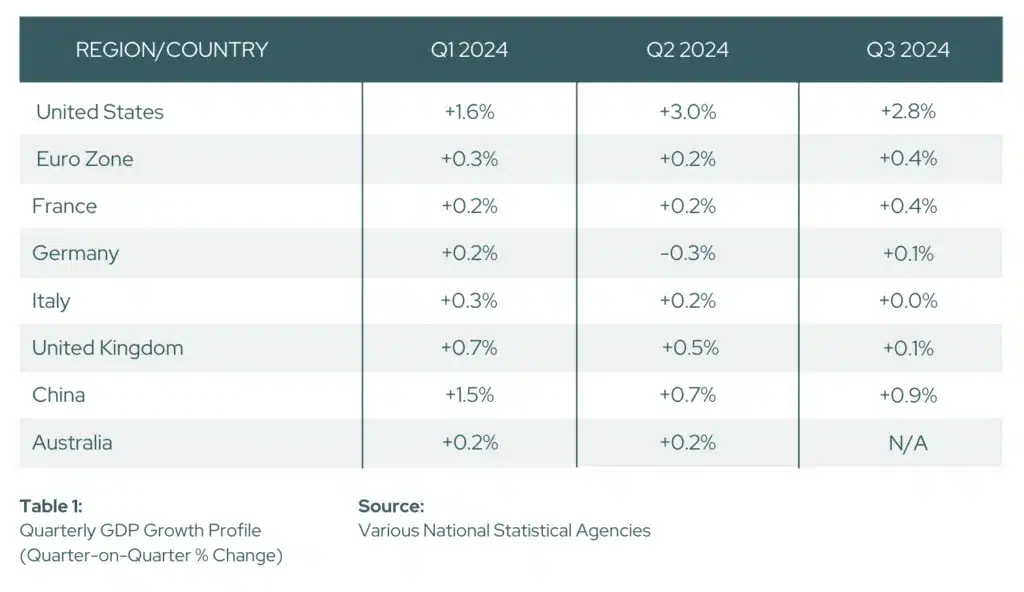
One of the features of the world economy over the past year has been the steady decline in annual inflation rates and the persistence of tight labour markets.
While inflation in the US, UK and Euro Zone blipped up in October and November, this is largely due to base effects and energy prices, but the downward trend is still established, and central banks will be relatively happy that inflation everywhere is close enough to the generally preferred level of around 2 per cent.
Tight labour markets and the potential for wage inflation is still a concern, but central bankers appear confident that the battle against inflation is virtually won, barring some unforeseen shock.
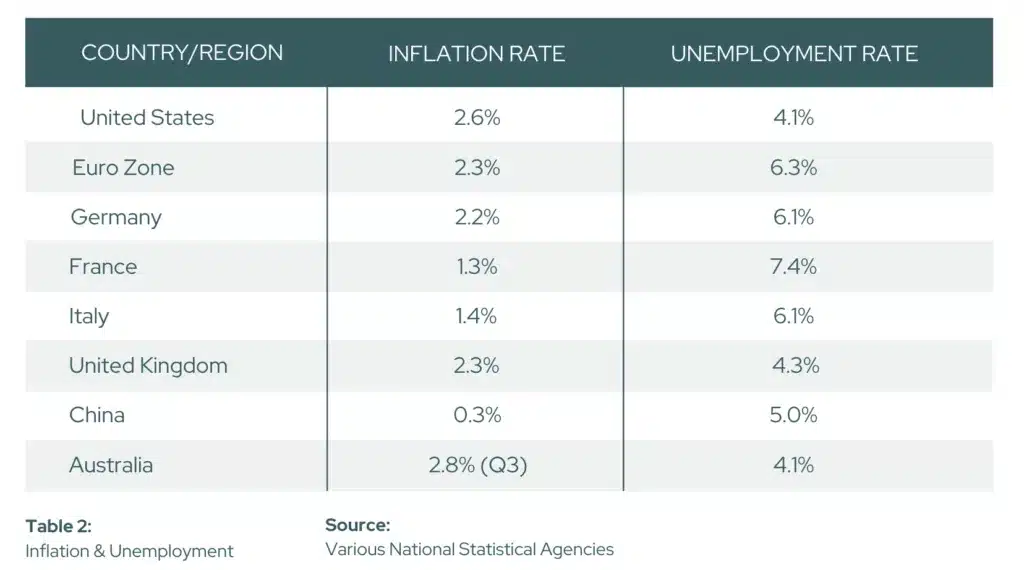
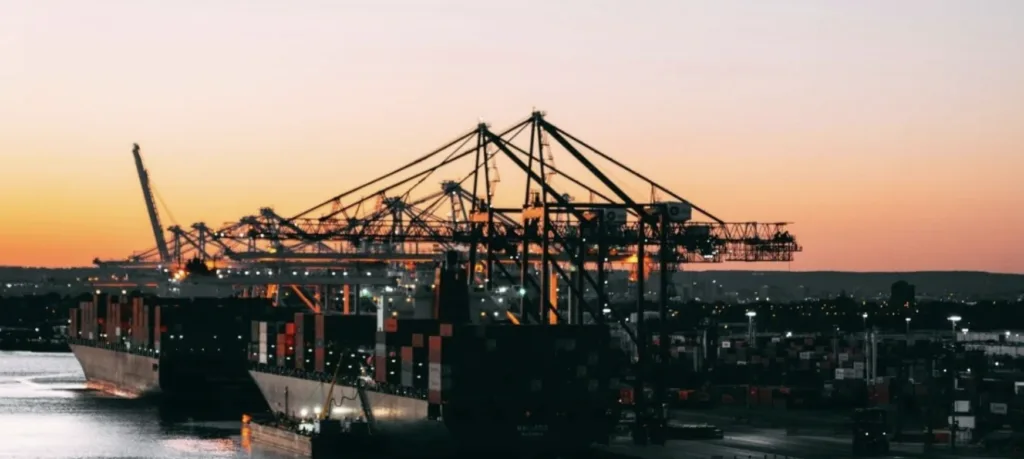
INTEREST RATES
The Bank of England cut its base rate by 0.25 per cent at the August meeting and followed up with another 0.25 per cent cut in November, taking the base rate down to 4.75 per cent.
It will continue to move cautiously from here, but the rate cycle should edge gradually lower over the coming months.
The ECB has cut its key rates by 0.25 per cent on three occasions, in June, September and October.
Against a background of weak growth and greater relaxation on the inflation front, the ECB should continue to ease rates over the coming months, The ECB is likely to trim rates by at least another 1.5 per cent over the coming year.
Overall, the interest rate outlook for borrowers and businesses looks positive over the coming months against a background of subdued growth and easing inflationary pressures.
GLOBAL UPDATE
In October, the IMF published its latest global economic forecast. It concluded that global growth would be stable but underwhelming in 2025. It does admit that the balance of risks is tilted to the downside.
These risks include a flare up of global geo-political tensions; sudden eruptions in financial market volatility leading to a tightening of financial conditions; problems in China’s property sector generating global spillovers via the effect on global trade; rising protectionism; continued geoeconomic fragmentation; and disruptions to the global disinflation process, which could prevent the loosening of monetary policy that is needed.
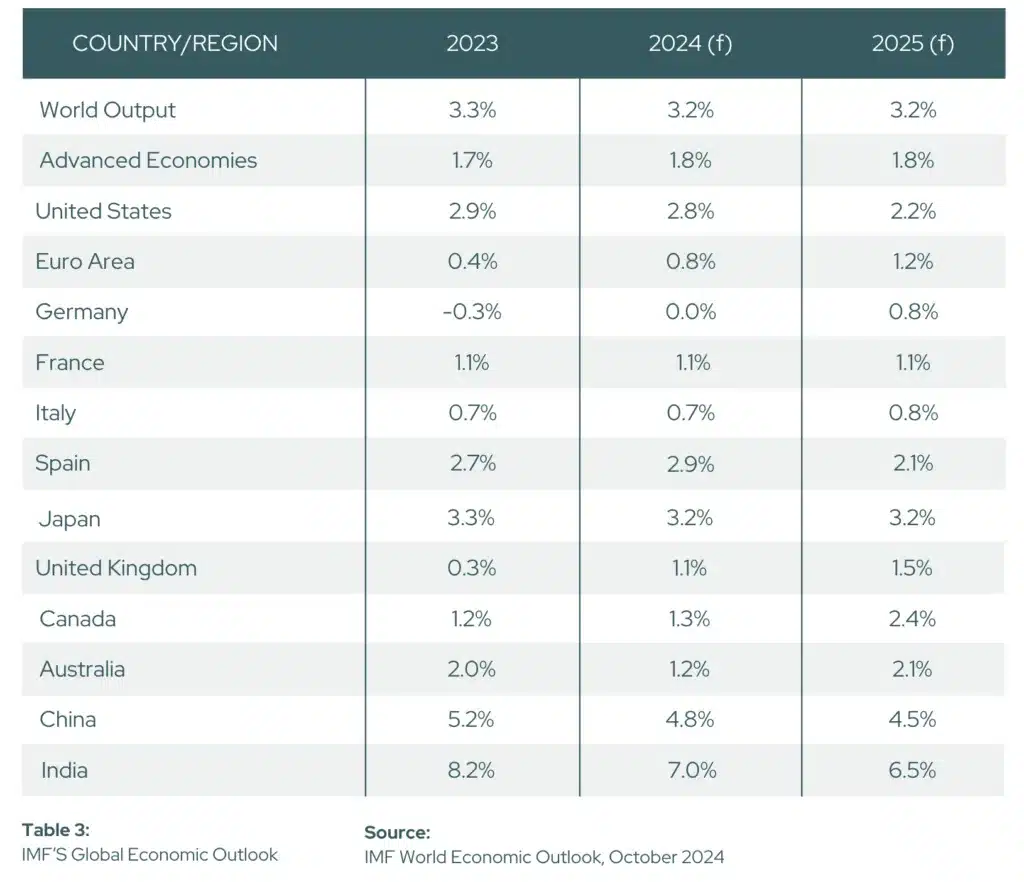
GLOBAL DEMAND
The United Kingdom economy expanded by just 0.3 per cent in 2023. This was the weakest annual growth since the 2009 financial crisis, excluding the pandemic-hit year of 2020. In the period from 2012 to 2023 real GDP growth averaged just over 1.6 per cent, which represents a poor long-term growth performance.
The growth performance in 2024 has been somewhat stronger than expected and the economy isa expected to expand by 1.1 per cent this year and 1.5 per cent in 2025. This is still a modest growth performance, and the new government has a major challenge ahead if it wants to achieve it main objective of lifting long-term growth.
In Budget 2025 the Labour government increased the minimum wage from £11.44 to £12.21 per hour from April 2025. The rate of employer National Insurance will increase by 1.2 percentage points to 15 per cent from 6th April 2025. And the secondary threshold, which is the level at which employers become liable to pay national insurance on each employee’s salary will reduce from £9,100 to £5,000 per year.
The Capital Gains Tax (CGT) rate will increase from 10 per cent to 18 per cent for those paying the lower rate, and from 20 per cent to 24 per cent for those paying the higher rate.
The Government intends to boost public investment by over £100 billion over the next five years across roads, rail, schools, and hospitals. It has set a mandatory housing target of 1.5 million over five years. The ban on onshore wind farm development has been scrapped and it has committed to doubling onshore wind by 2030.
The new government has laid out ambitious plans, which if delivered would give a significant boost to steel market activity.
The Northern Ireland economy continues to face significant challenges. GDP per capita at £29,674 (2022) is 19.5 per cent below the UK average. However, the economy is now performing reasonably well.
The economy has grown by 38 per cent in real terms since the Belfast Agreement, compared to 41 per cent in the UK, 38 per cent in Scotland, and 40 per cent in Wales. Productivity growth is a problem for the overall UK economy, but Northern Ireland’s productivity gap has been consistently below the UK average over the past two decades.
The potential growth in the economy is positive, as it is likely to benefit from inward investment and significant investment in public infrastructure. The economy is projected to grow by 1.1 per cent in 2024 and 1.8 per cent in 2025.
The Irish economy has performed quite strongly in 2024 on many metrics. Tax revenues remain very strong; the labour market is still delivering lots of job growth; the export side of the economy has rebounded strongly after a contraction in 2023; but consumer spending is under some pressure due to the escalation in the general cost of living over the past three years.
Labour Market
The Irish labour market continued to perform very strongly during 2024. I the year to end-September total employment in the economy increased by 98,600 or 3.7 per cent on a year earlier to reach a new record high of 2.794 million.
The employment rate, which is the share of persons in the total population aged between 15 and 64 years who are in employment, reached a record high of 75.3 per cent.
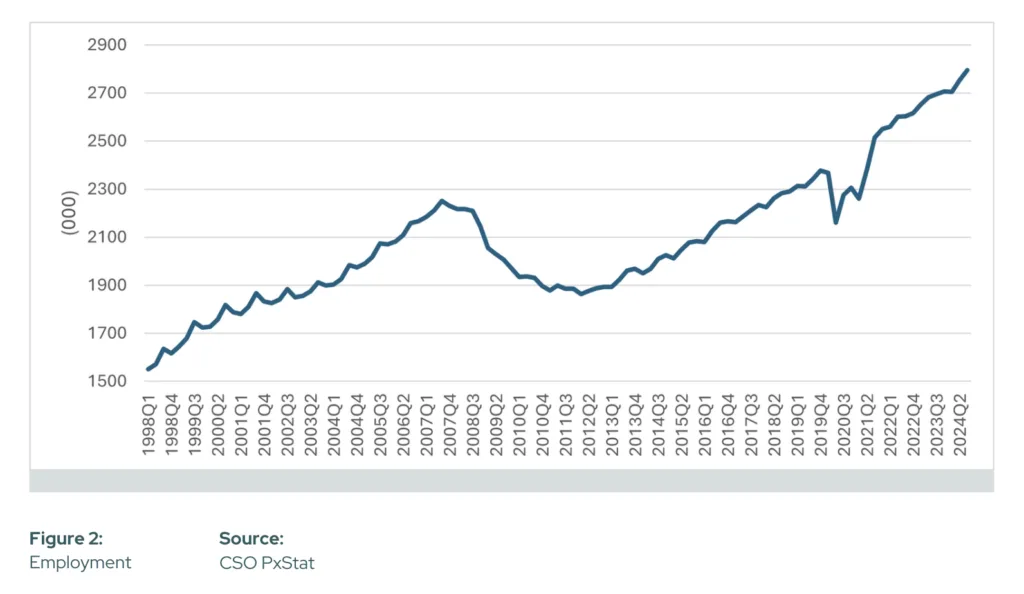
At a sectoral level, two sectors experienced a decline in employment in the year to the third quarter. Employment in agriculture, forestry & fishing declined by 1,800; and employment in the wholesale & retail trade declined by 700. Employment in manufacturing industry increased by a strong 17,900, and by 6,900 in construction.
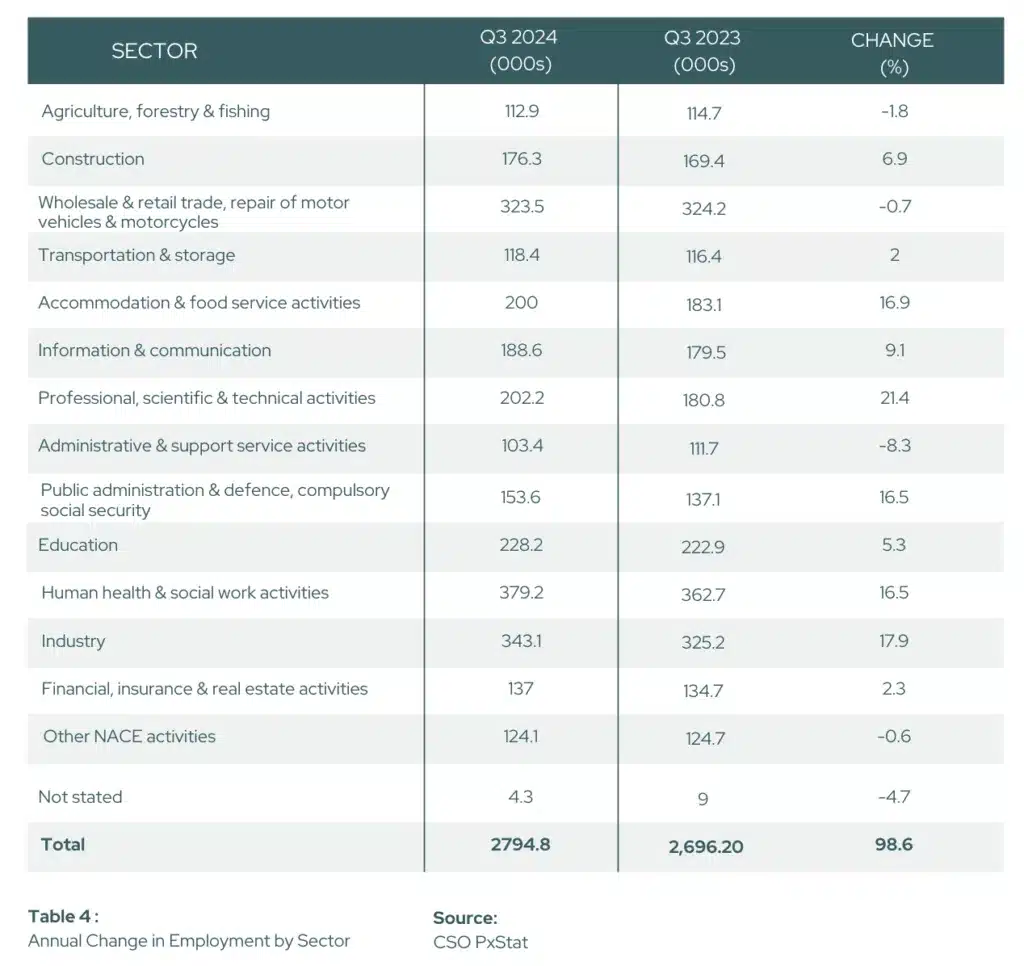
The unemployment rate stood at 4.1 per cent in November, which is virtually full employment. The recruitment and retention of workers is a key business challenge across the economy, and wages are under upward pressure. This is a particular challenge for the Irish steel industry.
Tax Revenues
An Exchequer surplus of €3.1 billion was recorded in the first 11 months of this year. This compares to a surplus of €0.3 billion in the same period in 2023.
Tax receipts of €44.7 billion were collected, which is €3.8 billion or 9.3 per cent ahead of 2023. This tax revenue buoyancy was driven primarily by strong growth in income tax and corporation tax, and to a lesser extent VAT.
Exports
After a decline of 5.5 per cent in merchandise exports in 2023, the performance has improved markedly in 2024. In the first 9 months of the year, exports expanded by 11.5 per cent.
Exports of food increased by 1.6 per cent; exports of chemicals & related products increased by 12.1 per cent, with medical & pharmaceutical products up by24 per cent; and electrical machinery exports were up by 22.2 per cent. The multi-national manufacturing components of the economy are performing strongly.
Consumer Dynamics
Consumer spending has been under pressure this year. Despite the fact that the inflation rate eased to just 0.7 per cent in October, the average cost of living in October 2024 was 21.2 per cent higher than in October 2020, before inflation started to accelerate. The legacy effect of 2 years of high inflation is putting pressure on the consumer sector.
The economic environment for the retail sector is challenging. In the first 10 months of 2024, the volume of retail sales was 0.5 per cent ahead of the same period in 2023.
When car sales are excluded, the volume of retail sales was 0.3 per cent lower than the first 10 months of 2023. This level of spending is soft and it is clear that cost of living increases are impacting on consumer behaviour.
THE ECONOMIC OUTLOOK
Despite significant global headwinds over the past couple of years in the shape of intense global geopolitical volatility; an escalation in global inflation; an aggressive tightening of monetary policy in all the key economic jurisdictions, the Irish economy has performed strongly.
The key positives for the Irish economy include:
All in all, cautious optimism is likely to be a valid sentiment for Ireland in 2025, but external risk factors are real, and the domestic housing situation is the most pressing economic, social and political challenge facing the new government Increasing housing supply and investing in infrastructure are now essential, rather than short-term policymaking.
Looking ahead to the likely performance of the Irish economy in 2025, a few issues stand out.
There is still considerable global uncertainty prevailing, but there is more visibility today than a year ago. The global outlook is not without risks, primarily geo-political in nature.
The key threats and challenges to the wellbeing of the economy include:
Donald Trump and the Republican party had a clean sweep, winning the popular vote; the electoral college; and getting control of both houses of Congress. There is intense nervousness around the world about what the second Trump presidency might look like, but it is important to judge him by what he does, rather than what he says. However, the people being chosen to participate in his new administration would suggest that he is intent on implementing much of what he promised.
It is hard to know where to start with the implications of his presidency, but it is worthwhile looking at some key areas.
Isolationism was a feature of Trump’s first presidency and could be more profound in the second term. The driver of this is his ‘America First’ creed, which involves becoming more inward looking and framing all policies in a domestic context, rather than the global role that the US traditionally played.
Economic Isolationism
Trump is fundamentally anti free trade and trade agreements. He has threatened tariffs of up to 20 per cent on all imports into the US; 60 per cent or higher on imports from China; 25 per cent tariffs on imports from Mexico and Canada, and an extra 10 per cent on Chinese imports in an effort to get those countries to stem the flow of drugs and illegal immigrants into the US.
The imposition of such tariffs would just result in higher prices for US consumers and
businesses; and would obviously risk a tit-for-tat trade war between the US and all countries impacted by the tariffs – in other words those affected countries would retaliate.
Trump has suggested that he would cut the corporation tax rate from 21 per cent to 15 per cent; and that undocumented immigrants would be deported.
If any or all these policies were to be pursued it would result in a weaker global economy; a widening of the already very large US budget deficit; higher prices; and a much more combative global geo-political environment.
Political Isolationism
During the first presidency, Trump had a fraught relationship with many of the traditional allies of the US, including the UK and the EU. Of interest in 2025 will be his relationship with the EU; the possibility or not of Brexit trade deals with the UK; the US commitment to NATO; the approach to the Russian invasion of Ukraine; the attitude towards the Israel/Gaza situation; the relationship with China, particularly in relation to Taiwan; and his attitude to Climate Change and the Paris Climate Accord.
There is much to ponder as we move into 2025 in relation to Trump, but we can be certain that chaos and uncertainty will be a dominant theme.
For European business, the trade exposure to the US in both directions will need to be examined closely, and risk mitigation measures put in place to deal with the possibility of a tariff-driven trade war with the US.
For Ireland, the risks are very real. 28 per cent of Irish exports go to the US, and US multi-national investment is essential to the functioning of the economy and the health of the public finances. Any measure that would damage global trade; US investment in Ireland; and Ireland’s exports to the US would represent bad news. Existing FDI should be secure given the investment involved, but attracting new flows of FDI will become more challenging.
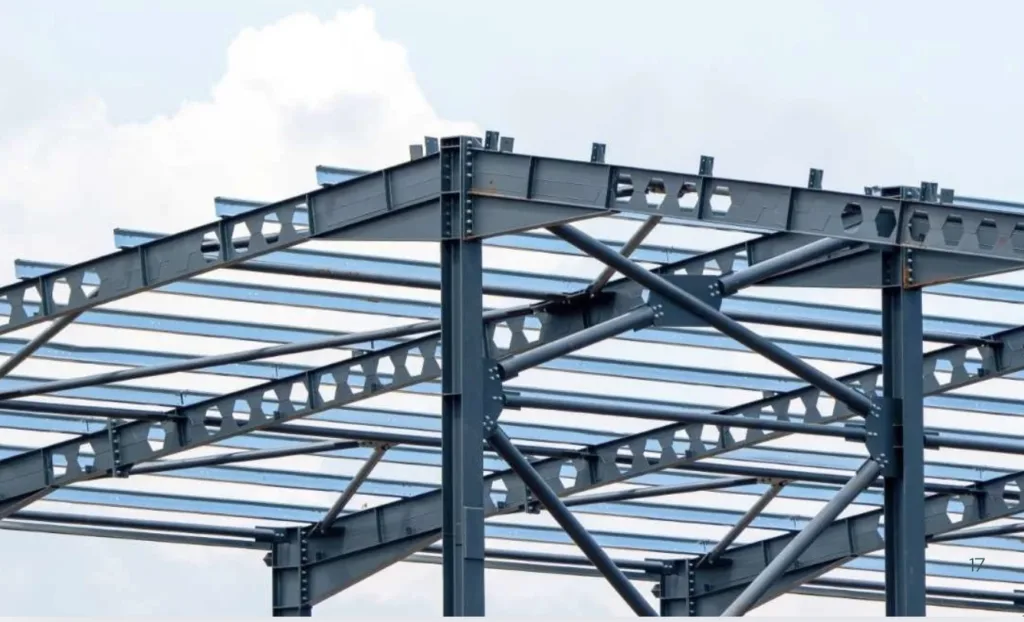
Public investment in housing, schools, hospitals., transport infrastructure, water, and renewable energy were themes that featured prominently in the General Election 2025 campaign.
Regardless of who forms the next government, it is very obvious from a social and national economic strategic perspective that Ireland needs to deliver significant capital investment across the economy over the coming years to cope with a rapidly growing population; a significant shortage of housing; the development of alternative energy; and public infrastructure such as schools, hospitals, and facilities for older people.
Ireland has a growing population and an ageing population, and significant capital investment will be required to cater for these trends, and also to address Ireland’s climate change obligations.
THE CONSTRUCTION SECTOR
Construction sector activity is a key driver of demand from the steel fabrication sector. Activity in the construction sector has been mixed in the first 9 months of 2024.
In the first 9 months 2024 compared to a year earlier:
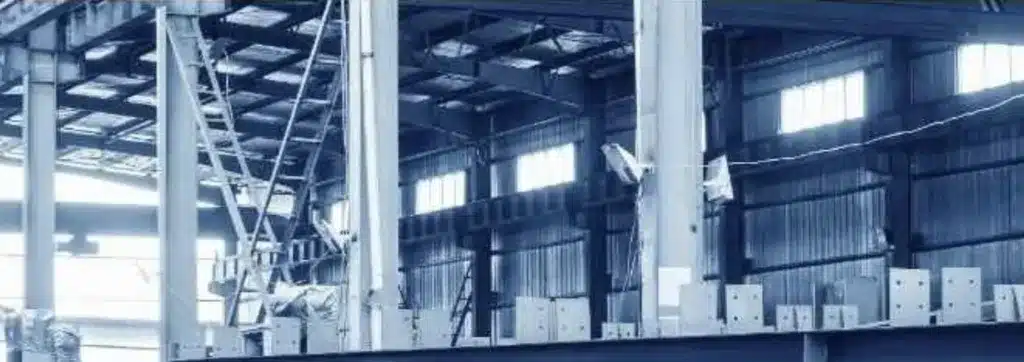
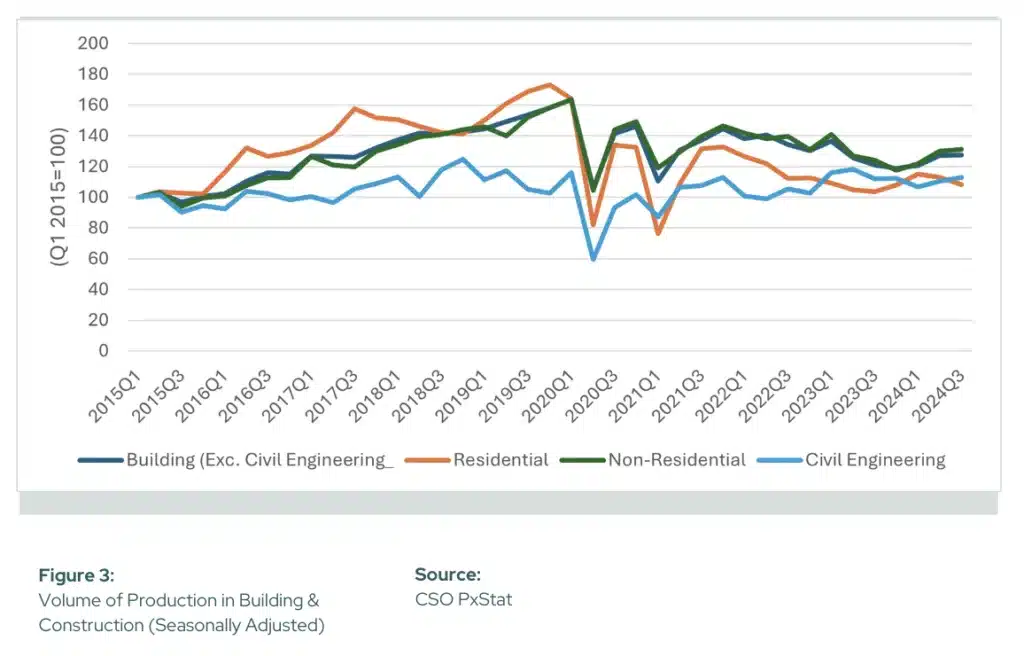
The lack of supply of housing for owner-occupier and rental purposes had a significant impact on the outcome of the general election. All parties promised in their manifestos to ramp up housing supply during the lifetime of the next government. It is generally accepted that at least 300,000 new residential units will be required over the next 5 years. Delivery of such a magnitude will be challenging given constraints from labour supply; the planning system; and water and electricity connection.
Housing is a massive economic and social challenge facing Ireland. House price inflation has been accelerating at an alarming pace over the past couple of years and affordability is a massive challenge for many potential house buyers. National average residential property prices increased by 7.9 per cent in the year to April 2024. The annual growth rate is down from a peak growth rate of 15.1 per cent in March 2022.
In September 2024:
In 2023, there were 32,626 residential units completed and completions in 2024 look set to be close to 34,000 – still totally inadequate.
Ireland needs to deliver an average of at least 50,000 residential units per annum over the next decade.
This will require changes to planning; a proper financing mechanism for development, including significant overseas investment; higher densities; increased capacity; and proper investment in public utilities, particularly water and electricity.
Outside of residential development, Ireland has a broader investment strategy. The NDP is a strategic component of Project Ireland 2040, which was introduced in 2018, and it outlines a decade-long public capital investment framework.
With a total public investment of €165 billion, this plan aims to elevate public investment to 5 per cent of Gross National Income (GNI), surpassing the EU average.
This incorporates €91 billion of Exchequer investment and €25 billion of non-Exchequer investment, which includes investments from the commercial semi-state sector.
This plan continues to be rolled out and Government is now committing significant resources to capital investment, and the Exchequer surpluses that are being delivered are facilitating this investment.
The outlook
Steel input costs to the construction industry increased significantly after the Russian invasion of Ukraine. Between Jan 2022 and February 2023, the price of structural steel fabricated metal increased by 73.1 per cent. Prices have subsequently eased modestly, but in October 2024 were still 102 per cent about the price level that prevailed at the beginning of 2021.
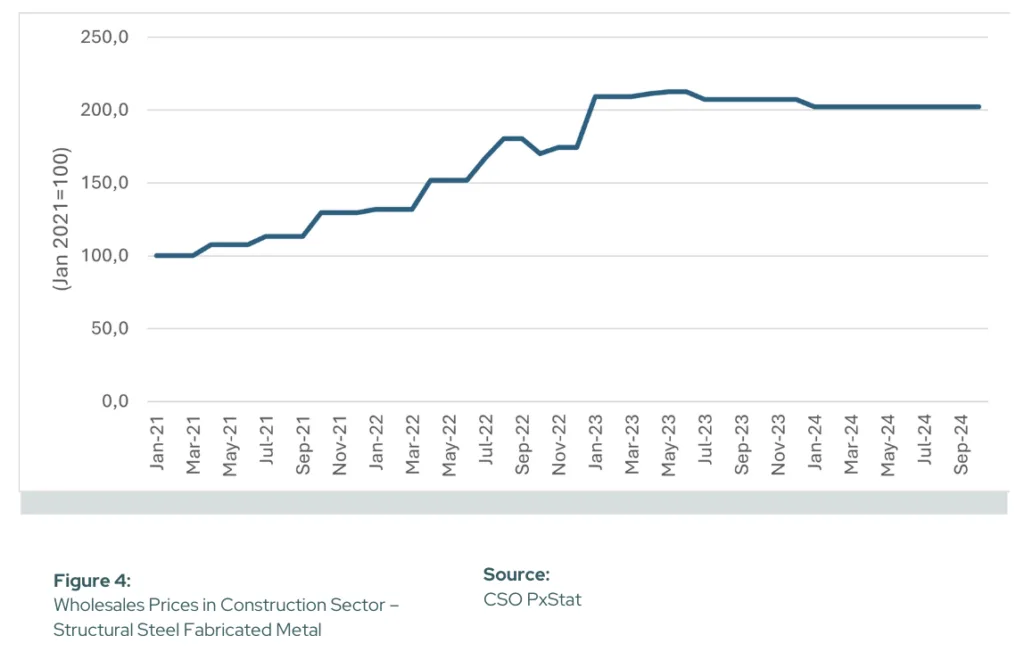
CLIMATE CHANGE AGENDA
The climate change agenda will create significant demand for the services of the Irish steel industry. Ireland has an international commitment to achieve a 51 per cent reduction in Greenhouse Gas (GHG) emissions by 2030, compared to 2018 levels, and to achieve carbon neutrality by 2050. To achieve these targets, a multi-faceted approach will be required. This will involve the electrification of the transport fleet; the development of alternative energy sources, including solar, offshore and onshore wind and biogases; the retrofitting of homes, including solar panels; and charging infrastructure. This agenda will require significant public and private investment and will give a significant boost to economic activity, and the Irish steel industry. Although the Green Party is now out of government, it is not conceivable that the climate change agenda will diminish in importance.
THE MULTI-NATIONAL SECTOR
The end-year results for IDA Ireland have not been published yet. At the end of 2023, employment in IDA supported multi-nationals declined marginally by 0.3 per cent to 300,583.
The mid-2024 statement from the IDA showed that in the first 6 months of 2024, the IDA supported 131 investments, 74 of which are planned for regional locations, which will deliver an extra 8,900 jobs.
FDI makes a very significant contribution to the Irish economy in terms of direct employment; indirect employment supported; tax revenues; and the goods and services purchased from Irish suppliers.
Clearly the role of the IDA in attracting FDI is becoming more challenging. This reflects global economic growth challenges; global corporation tax developments; increased competition for mobile investment; domestic cost and competitiveness challenges, particularly the cost and availability of housing for rental and ownership purposes; energy and water supply; and the potential implication of corporation tax and tariff
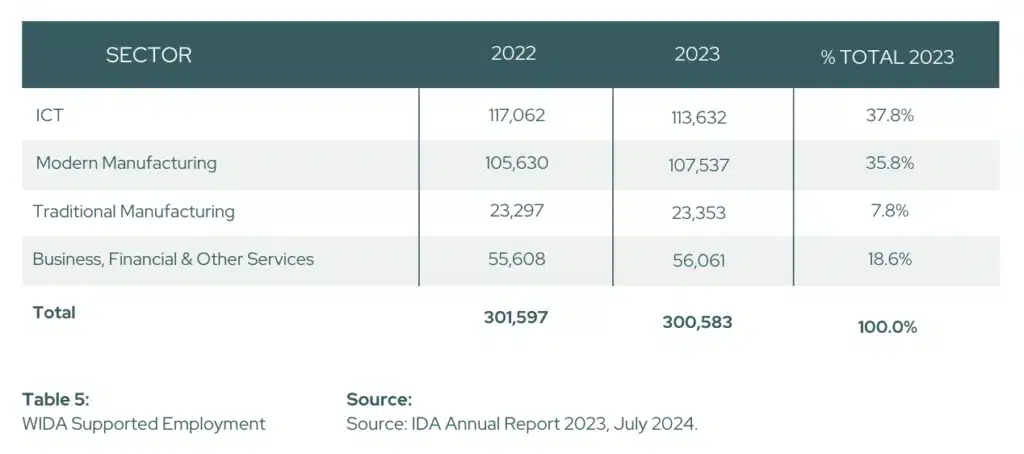
AGRICULTURE
The farming sector continues to be characterised by significant volatility, due to factors such as volatile input and output prices and more extreme weather conditions. The operating surplus increased by 31.5 per cent in 2022 to reach a record high of €4.7 billion, it then declined by 39.4 per cent in 2023; and expanded by 32.7 per cent in 2024.
Agricultural input and output prices increased sharply from 2020 to the end of 2022. Between November 2020 and December 2022.
Between November 2020 and December 2022, input prices increased by 56.1 per cent and output prices increased by 59 per cent. Between November 2022 and September 2024, input prices declined by 21.8 per cent. Between December 2022 and October 2023 output prices eased by 24.4 per cent. Output prices have subsequent edged up and between October 2023 and September 2024 prices have increased by 21.4 per cent.
The high cost of concrete and other materials is leading to the delay or postponement of farming investment.
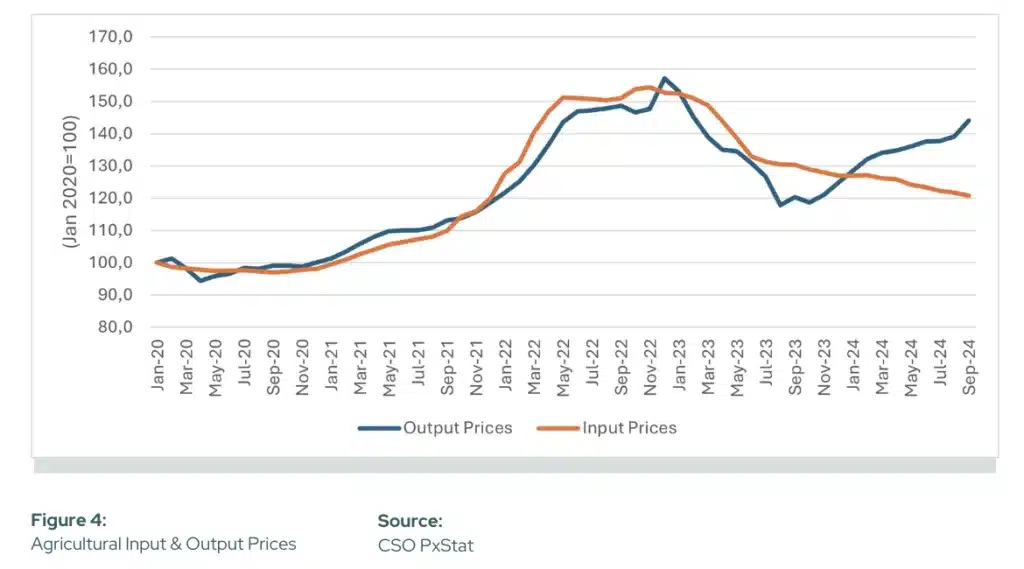

Farm incomes are becoming more volatile due to volatile input and output prices, and more extreme and unpredictable weather conditions. Farmers are also challenged by environmental obligations and pressure to cut back output. However, there is still strong investment occurring as farm level caused by the need to keep cattle indoors longer, environmental obligations, and expansion by dairy farmers in particular.
One of the issues that is challenging farm construction is the cost of cement. Wholesale cement prices in October 2024 were 59.5 per cent higher than January 2021. This is causing some pressure on farm construction activities.
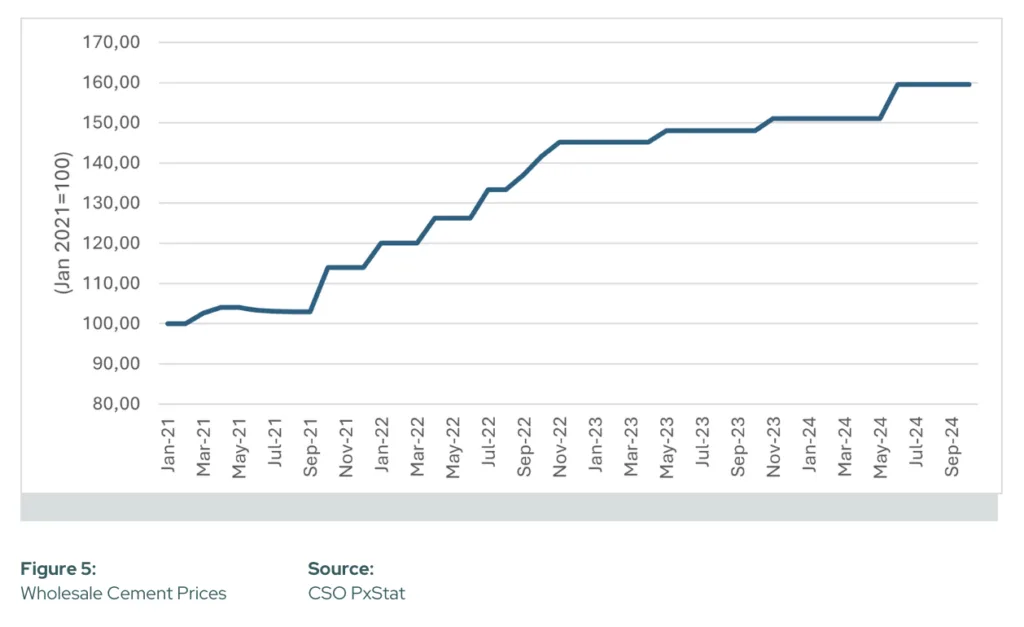
The issues, opportunities and challenges facing the Irish steel industry are broadly similar to the last report. The outlook for demand for the goods and services that the Irish steel sector provides and produces looks positive. The economy is doing reasonably well; interest rates are coming down and are projected to fall by at least 1.5 per cent over the next 12 months; and the demand for product and services from key sectors such as construction, public infrastructure, alternative energy and agriculture should hold up over the coming year.
However, the operating environment for the sector is challenging. Labour shortages are acute; the cost of labour is rising strongly; recent labour market changes, such as the increase in the minimum wage from €12.70 to €13.50 in Budget 2025; and elevated business costs are creating significant challenges for the sector.
Green Steel
Green steel is the manufacturing of steel without the use of fossil fuels. Around 75 per cent of steel is still produced using coal-fired blast furnaces. According to the World Economic Forum (WEF) steel manufacturing produces more CO2 than any other heavy industry, comprising around 8 per cent of global emissions.
Efforts are being made to move steel production away from coal-fired furnaces to furnaces powered by electricity or hydrogen. Producing green steel is an expensive process. As governments around the world seek to reduce carbon emissions to reach ambitious net-zero targets, steel is getting a lot of environmental attention, and this will only intensify. For steel manufacturers, decarbonising the manufacturing process is very expensive.
The reality is that the production of green steel is and will be more expensive and this will impact on steel prices here in Ireland. Globally, progress is proving slow and difficult but there is an inevitability about the ultimate destination.
For operators in the Irish steel industry, as in every other sector of the economy, sustainability will become more and more essential. Progress in the steel sector is proving slow and difficult but the pressure to achieve national environmental targets by 2030 will only intensify. Operators need to create a sustainability plan and strategy and invest in the process. As the representative body for the sector, Irish Steel should be consulted to assist in the sustainability journey.
Carbon Border Adjustment Mechanism (CBAM)
The EU Carbon Border Adjustment Mechanism (CBAM) came into effect on 1st October 2023. This has resulted in a new set of reporting requirements for importers into the EU.
As the EU raises its climate ambition and less stringent environmental and climate policies prevail in some non-EU countries, there is a strong risk of so-called ‘carbon leakage’ – i.e. companies based in the EU could move carbon-intensive production abroad to take advantage of laxer standards, or EU products could be replaced by more carbon-intensive imports. Such carbon leakage can shift emissions outside of Europe and therefore seriously undermine the EU’s as well as global climate efforts.
The CBAM is intended to support the EU’s climate ambition and ensure that climate action is not undermined by production relocating to countries with less ambitious policies.
The European Parliament and the Council of the European Union signed the CBAM Regulation (EU) 2023/956 on 10th May 2023. The set of rules and requirements for the reporting of emissions under CBAM are further specified in Implementing Regulation (EU) 2023/1773 laying out reporting rules during the transitional period.
The Commission has set up the transitional CBAM registry, is preparing further secondary legislation, and carrying out the planned analysis. The definitive period of CBAM will enter into force in January 2026.
The European Commission has made available detailed guidance for the application of CBAM during the transitional period. These include detailed manuals, webinars, elearnings, and other materials. All information supporting the implementation can be accessed on the Commission’s CBAM webpage.
There is a four-year transitional period from 1st October 2023, during which businesses will only have reporting obligations. From 1st January 2027, when the mechanism is expected to be fully implemented, liable companies will also bear the financial burden by being required to pay guarantees and purchase CBAM certificates.
CBAM initially will apply to a limited number of product categories and then the scope may be extended to cover other product categories including organic chemicals and polymers. It will have implications for the steel industry and will increase costs.
Modular Homes (MMC)
Given the ongoing crisis in the housing market, there is a strong imperative to ramp up the production of modular homes. Engineers Ireland has called on the Government to significantly increase the number of modular homes being built.
Modular homes are based on modern methods of construction; they are built in factories; and they are delivered on site. They can be constructed in a matter of weeks and can be assembled on site in few days. They are less labour intensive; they are cheaper; and they are much more sustainable from an environmental perspective.
Modular construction is likely to become an increasingly important source of housing supply in Ireland and the UK going forward. The UK presents a particular opportunity for Irish firms, as similar to the situation with steel fabricators, modular home builders are facing significant challenges in the UK.
Modular homes will have to form an important element of changing the way to deliver housing that is more sustainable, quicker to deliver and more efficient.
Data Centres
The construction of data centres in Ireland is now under considerable pressure due to planning difficulties and the energy consumed by the centres. There is some potential for data centre development on former peatlands owned by Bord na Móna, but the main opportunities are likely to come from abroad.
There is significant growth in data centres in many countries such as Germany, Netherlands, the UK, Finland, Denmark and Sweden. Irish firms have expertise and experience in data centre construction and should be able to exploit business opportunities in those countries.
General Employment Permits
The labour market is still very tight and is operating at full employment. This is creating considerable labour scarcity and wage costs are under intense pressure. Recruitment and retention of suitably qualified and skilled staff is a major challenge.
There is an extreme skills gap for fabrication welders and experienced CNC machine operators in particular. Changes to the general employment permit system which saw an increase of 13 per cent to €34,000, with an intention to gradually increase it to €39,000 will cause serious difficulties in the steel sector.
The Apprenticeship Scheme
The apprenticeship scheme is not delivering the skilled labour supply that is required. There needs to be a very strong government focus on investing heavily in apprenticeship schemes across the economy, but particularly steel sector workers.
Increased Cost of Labour
The SME sector in general is finding the business environment challenging. Several measures have been or are about to be introduced that are adding significantly to the cost of doing business.
These measures include the increase in the national minimum wage of 6.3 per cent on January 1st, 2025, to €13.50 per hour; the progression towards a living wage of €15 per hour by 2026; statutory sick pay changes; parental leave changes; the extra bank holiday; higher employer PRSI rates from October 2024; and auto-enrolment for pensions, which will be introduced in 2024. These government measures will combine to increase costs significantly for SME businesses across diverse sectors.
Average hourly earnings in manufacturing increased by 21.4 per cent between the first quarter of 2020 and the third quarter of 2024.
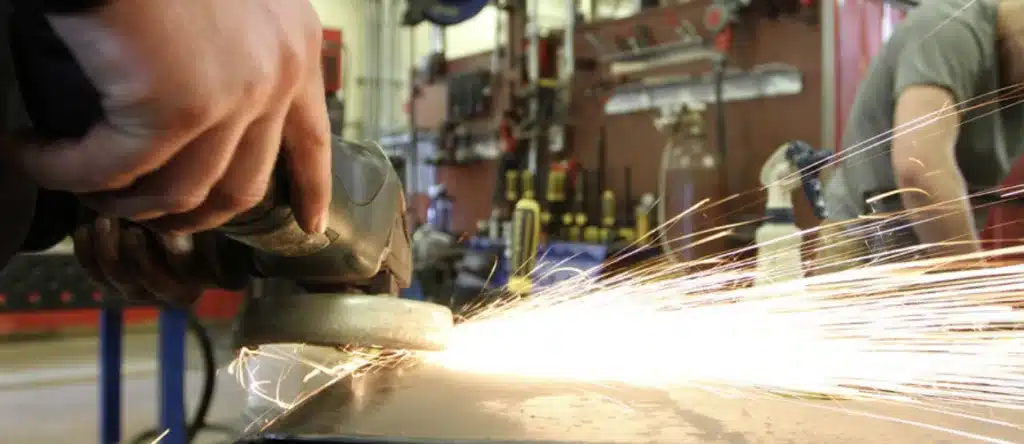
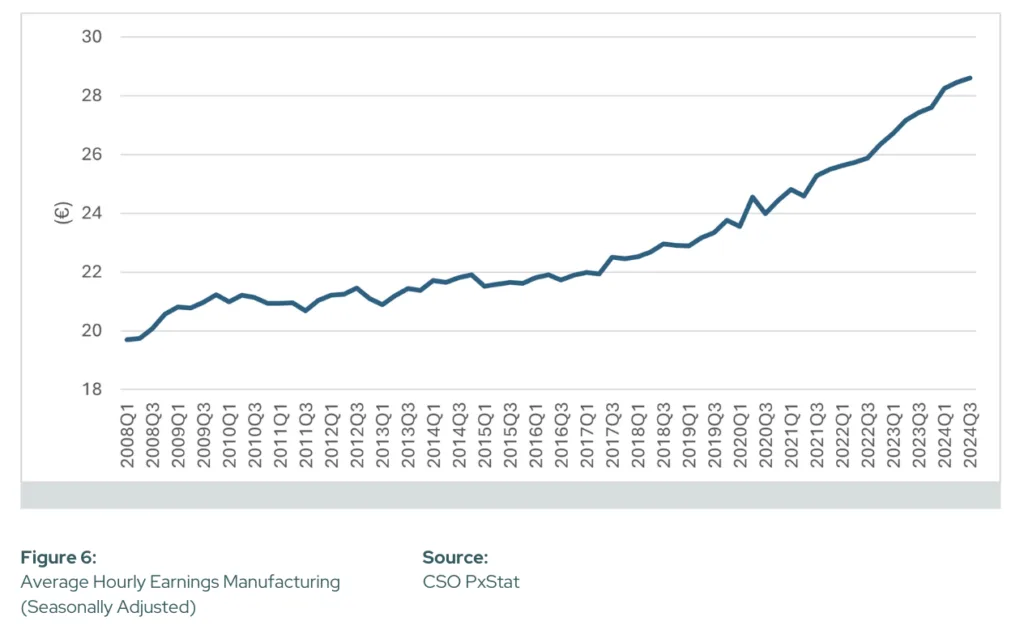
Elevated Business Input Costs
The challenging operating environment for the SME sector was highlighted during the general election campaign. The general cost environment has been under intense pressure over the past 4 years. The increase in the cost of labour is coming on top of significantly elevated other costs of doing business, such as insurance costs and energy costs.
Figure 7 shows the recent trend in wholesale electricity costs. Wholesale electricity prices increased by 573 per cent between February 2021 and August 2022. Prices have subsequently eased, but the wholesale price of electricity in October 2024 was still 115 per cent higher than in February 2021.
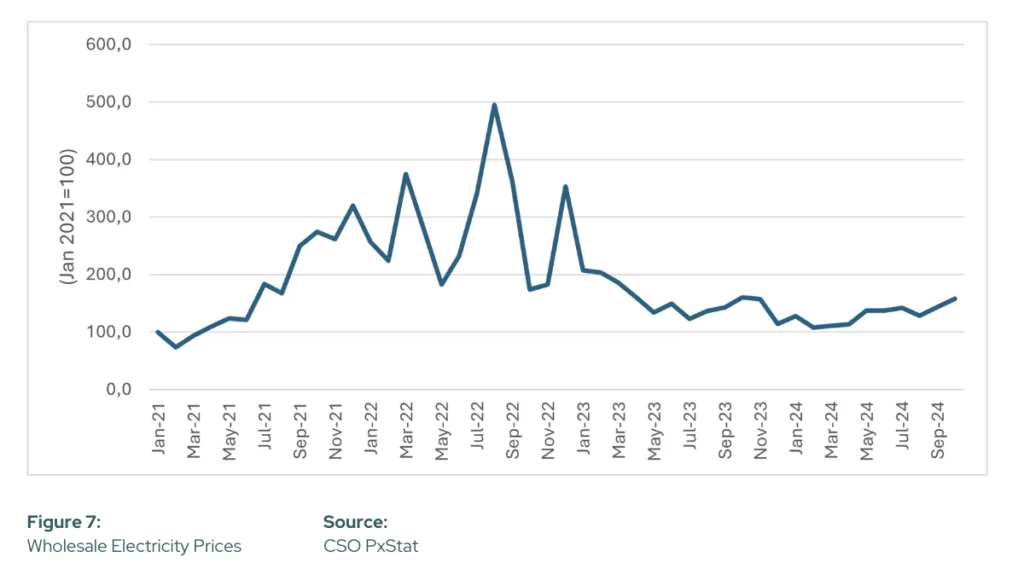
Access and Cost of Finance
The cost of borrowing has increased significantly since 2022. While borrowing costs look set to decline over the next couple of years, access to finance is a significant challenge for SMEs in particular.
There is a lack of choice and real competition in the banking sector, and this is hitting SMEs in particular. A proper funding mechanism for the SME sector is essential, as they are overly reliant on a non-competitive banking system.
SOME KEY FACTS ABOUT THE IRISH STEEL FABRICATION SECTOR:
In the first 9 months of 2024:
In 2023:
CONCLUSIONS
This second quarterly report prepared for Irish Steel membership seeks to outline global trends in the steel industry; the global and domestic macro-economic factors that are important for the Irish steel industry; the key trends in the sectors that drive demand for the services and products produced by the Irish steel industry.
Finally, it looks at some of the key business and legislative challenges facing the sector.
Notwithstanding the challenges facing the steel sector, the outlook is positive both domestically and globally.
Most of the sectors that Irish Steel members provide goods and services to are set to experience continued growth into 2025. However, managing the cost base will be essential as margins are being squeezed, which is common across the Irish SME sector at the moment.
This report is not definitive but seeks to highlight the key issues at a point in time. Going forward, future quarterly reports will update on all of these issues and seek to identify other issues that become relevant. The author would very much appreciate any feedback from Irish steel members, and particularly issues and trends that they are seeing in domestic and global markets.

THIS REPORT IS BASED ON DATA AVAILABLE UP TO 4th December 2024
[i] ‘Global steel demand outlook for 2024 and 2025; Challenges and recovery prospects.’ World Steel Association.
[ii] ‘Economic and Market Outlook 2024-2025,’ EUROFER, Q4 2024.


Copyright © 2025 - All rights reserved. Made with 💖 by Irish Steel
